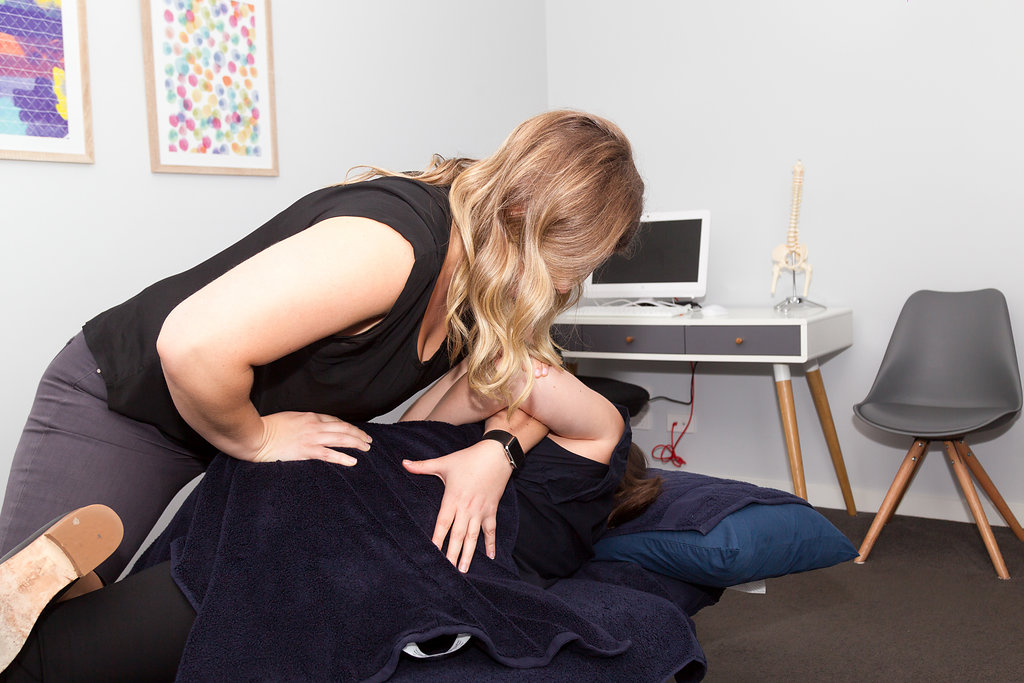It is a noise some people find so satisfying, yet it can make others cringe. It’s the noise that all too often makes your parents or grandparents say “don’t do that, it will give you arthritis!”.
Joint cracking is also known as joint manipulation. When appropriate, the technique is often used by manual therapists (like us Osteopaths!) to improve joint mobility, relax surrounding muscles and reduce pain. Osteopaths are trained to perform this technique using as little joint range as possible, and being really precise so that patients feel more comfortable. We actually refer to this technique as “HVLA” – high velocity, low amplitude. What that means is we perform the technique quickly and with as little movement of the joint as possible.
So what really happens when we crack our joints? And what actually makes that popping noise?

Within our joints we have fluid which lubricates the bony surfaces on either side of the joint, and this fluid contains different gases. When we stretch or thrust the joint to a certain position, the pressure in the joint is reduced, and this results in bubbles of gas “popping”. This is the “popping” or “cracking” sound we hear. Over the following 20 minutes or so, the gas is once again re-absorbed into the fluid.
Sometimes the clicking sounds in joints are not always due to this mechanism. Muscles commonly attach near our joints via tendons. Occasionally these tendons can move over a bony region, and then “flick” back causing a “snapping” type of sound.
Will cracking my joints really give me arthritis?
No, luckily this is an old wives tale! Previous studies have been carried out comparing imaging (X-rays and MRIs) from 2 distinct groups of people. One group repetitively cracked their knuckles, the other did not. Researchers found that there was no correlation to the incidence of arthritis with either group. The study concluded that repetitive cracking was not shown to be a causative factor of arthritic change (1).
Why Do Osteopaths Use This Technique?
Osteopaths may use joint manipulation in combination with other techniques like soft tissue massage, stretching and mobilisation, to help encourage movement in stiff or restricted joints. It may also reduce pain felt in that joint.
The American Medical Association published a review in April 2017 endorsing spinal manipulation as best practice for acute low back pain (2). Manipulation was shown to be associated with significant benefits in pain and function for up to 6 weeks.
At Pakenham Osteopathy, we always take an extensive history from you to screen for any risk factors that may make this technique inappropriate. More importantly, we always ask if you are comfortable being manipulated. It’s perfectly fine to say no, it just means we use other tools in our tool box!
If you have any questions regarding this article, please feel free to email me at rebecca@pakenhamosteopathy.com.au or check out our website here for more information about our services
References:
1 J Am Board Fam Med. 2011 Mar-Apr;24(2):169-74. doi: 10.3122/jabfm.2011.02.100156. “Knuckle cracking and hand osteoarthritis.” Deweber K1, Olszewski M, Ortolano R. https://www.ncbi.nlm.nih.gov/pubmed/21383216
2 Association of Spinal Manipulative Therapy With Clinical Benefit and Harm for Acute Low Back PainSystematic Review and Meta-analysis.” Neil M. Paige, MD, MSHS1; Isomi M. Miake-Lye, BA1,2; Marika Suttorp Booth, MS3; et al. https://jamanetwork.com/journals/jama/article-abstract/2616395





